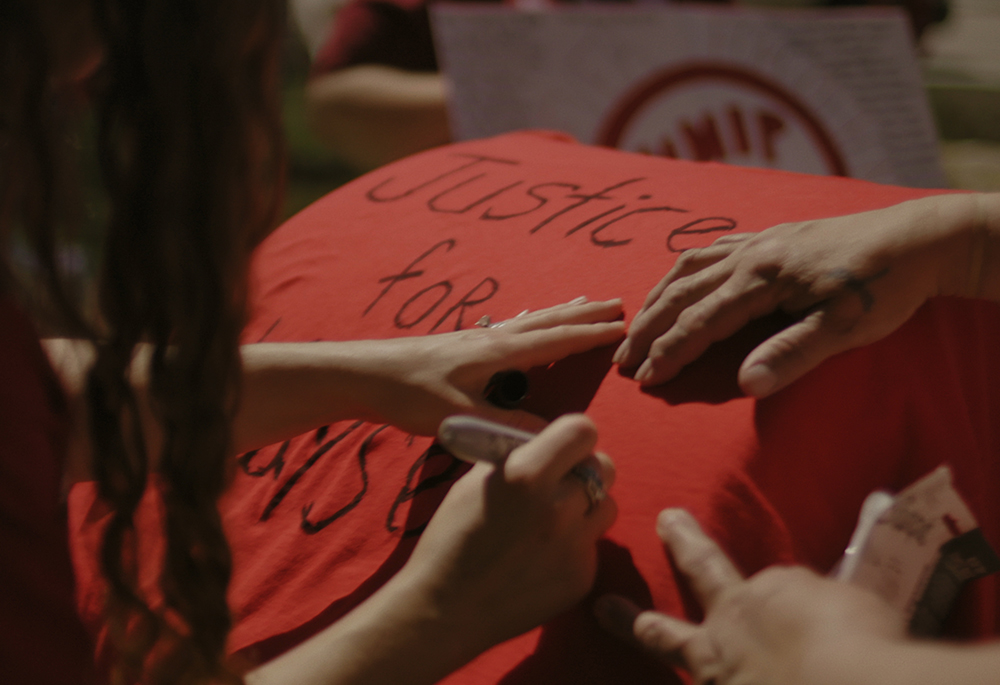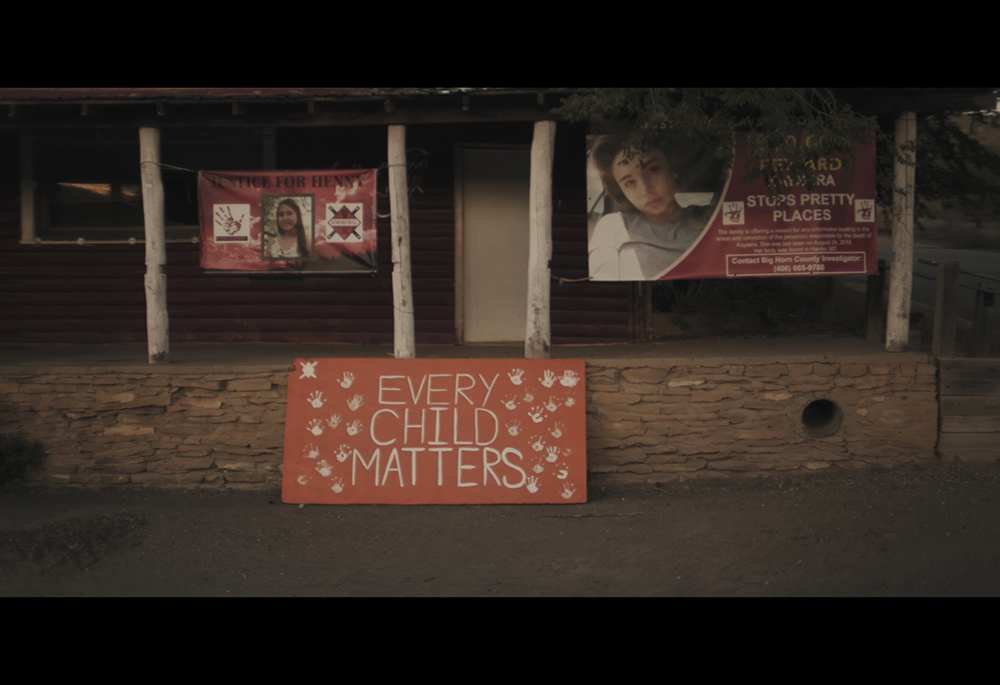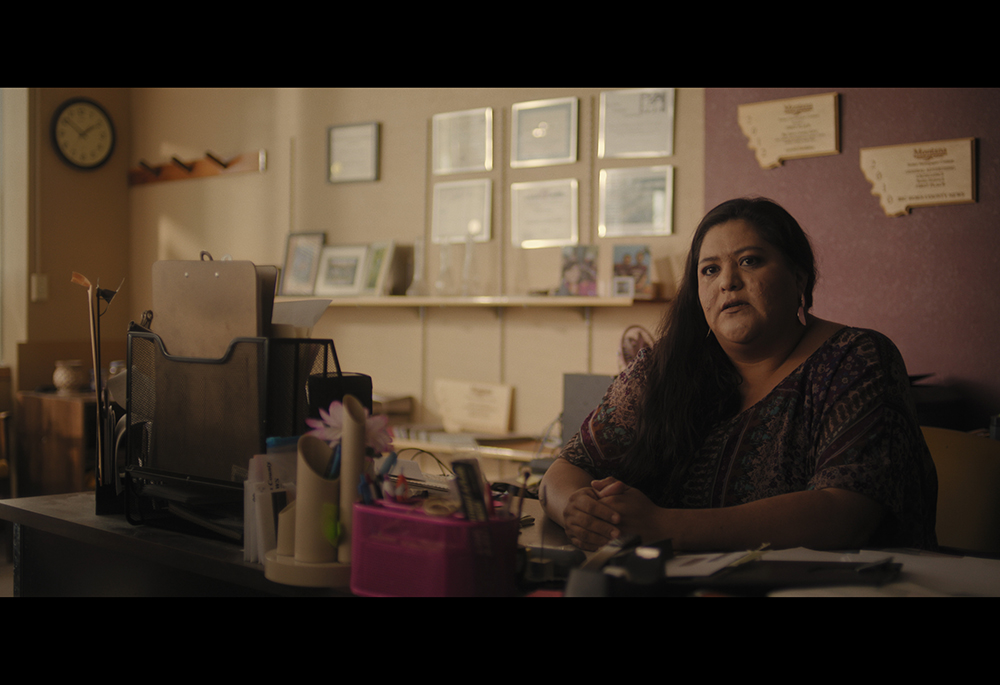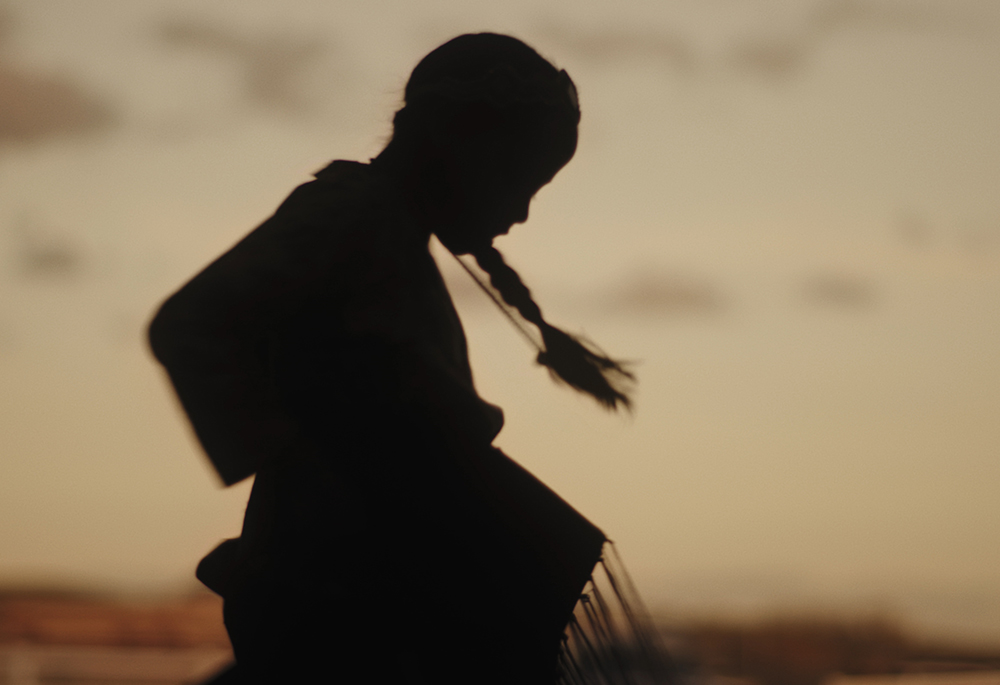
A still from "Murder in Big Horn" (Courtesy of Showtime)
Indigenous people, as the National Indian Council on Aging reports, according to the U.S. Census, constitute 1.1% of the total U.S. population. Yet, among some Native American tribes, Native women experience murder rates 10 times higher than the national average, the National Indigenous Women's Resource Center reports.
Filmmakers confront that disparity in "Murder in Big Horn." Augmented by its outstanding contextual analysis, the docuseries' compelling storytelling heightens awareness about a problem requiring more urgent action: missing and murdered Indigenous women.
Originally airing in three one-hour segments in February, all episodes of "Murder in Big Horn" are now available to stream on Showtime.
Veteran documentarian Matthew Galkin executive produces and co-directs the series with Razelle Benally. A member of the Oglala Lakota/Diné Nations, Benally may be best known as a screenwriter for "Dark Winds," the AMC+ limited series psychological thriller, distinguished by its realistic, sympathetic portrait of life among the Navajo Nation.
Featuring young women's stories from the Crow and Northern Cheyenne reservations in Big Horn County in Montana, "Murder in Big Horn" illuminates a handful of cases of the more than 5,700 reported missing native women in America, which the National Crime Information Center has recorded as of 2016.

A still from "Murder in Big Horn" (Courtesy of Showtime)
From the Northern Cheyenne Nation, 14-year-old Henny Scott went missing in December 2018. The high school freshman basketball player was with some friends at a party without adult supervision when she disappeared.
Kaysera Stops Pretty Places was 18 when she was discovered dead in a backyard in Hardin, Montana, near the Crow Reservation in August 2019.
And Crow Nation 16-year-old Selena Not Afraid was found dead three weeks after she vanished from a highway rest stop between Billings and Hardin, Montana, Jan. 1, 2020, not far from where she was last seen.
Of the victims' family members, law enforcement officers, attorneys and activists, who offer their perspectives and insights into these cases, Crow member Luella Brien may impress viewers most. Bearing witness to these tragedies and their profound connections to her tribal and family history, Brien emerges as one of these narratives' heroines.
Brien returned to the reservation after college because she wanted her children "to have the experience of being Crow in Crow country" even as she acknowledges the titular county "is the most dangerous place for Native women in the country," and her 13-year-old daughter Aurelia is "a target for just being female."

Luella Brien in "Murder in Big Horn" (Courtesy of Showtime)
What happened to her dad's sister, Deedee, informs the former Big Horn County News general manager and editor's determination to discover the truth about the disappearances. Brien's aunt was found dead in the snow in 1977 at the county fairground after being missing for four days.
Deedee became, the journalist says, "another dead Indian. And they didn't offer any common decency in writing about her as a missing person and as a human. These cases are not true crime stories to us. These cases are our relatives."
Increased attention to missing and murdered Indigenous women cases is the one positive development that resulted from the recent Montana disappearances. "The Henny Scott case," Brien says, "did mark a turn in our local media paying attention to murder and missing cases. She had her name in the headlines in the way cases like this don't get."
Selena Not Afraid's story, however, engendered an unprecedented level of attention for a missing and murdered Indigenous women disappearances. "If Henny was the spark and Kaysera was the kindling, then Selena," Brien says, "was the forest fire." The search for her was not something she had seen before. "They had a drone. They had a helicopter. They had volunteers from all over the place," Brien says.
Advertisement
Despite the extra vigilance displayed to find Selena, the investigation into her death was less than exhaustive, with less than credible and satisfactory conclusions, typifying other missing and murdered Indigenous women investigations.
Selena's grandmother, Angelena Bell, notes Selena's brother was shot by a SWAT team, one sister was killed in a hit-and-run accident and her twin sister, Zoey, committed suicide when they were 11. But investigators apparently weren't interested in how that history may have factored into Selena's death. There's a distinct possibility Selena may have been involved in sex trafficking. According to a television reporter in the documentary, Native women and girls account for 30-40% of Montana's trafficking victims.
County medical examiner Robert Kurtzman ruled Selena's cause of death as hypothermia, seemingly dismissing plausible alternatives. Another coroner also determined Henny died the same way, despite evidence her nose was broken, she experienced bruises, scratches and a burn mark, and was wearing someone else's clothes when she died, her mother Paula Castro confirms.
"Hypothermia is the go-to answer to the dead Indian problem in Montana," Brien says.
Non-Indigenous in Hardin reflect that kind of dismissal. Among them, "there has been a devaluation of native life," attorney for Kaysera's family and Cherokee Nation member Mary Kathryn Nagle says. "The reason there hasn't been justice in this case is that Kaysera is a Native girl."
The filmmakers also document the jurisdictional issues — the inefficient bureaucratic divide between the local sheriff office, federal government and tribal nations — that hinder investigations of missing and murdered Indigenous women cases.
The county sheriff is responsible for investigating crimes committed outside of the reservation while the Bureau of Indian Affairs and FBI probe crimes committed on tribal lands. These agencies, however, can't pursue cases against non-Indians. "We're almost a lawless community," Lucy Simpson of the National Indigenous Women's Resource Center says.
"Murder in Big Horn" works well enough as an intriguing mystery series. However, its thoughtful yet candid historical and sociological analysis elevate the docuseries above a standard whodunit.
Viewers will especially appreciate Crow Tribal Historic Preservation Office director Aaron Brien's commentary, which grounds the missing and murdered Indigenous women problem in Native Americans' tragic history. (It isn't clear if Aaron is related to Luella Brien.)
"In the late 1860s," he says, "the Crow became reservation people." The introduction of alcohol to the reservation, the historian says, "emasculated our warriors." "The early reservation period," Aaron Brien says, "is a dangerous time because it laid the blueprint for where we are today."

A still from "Murder in Big Horn" (Courtesy of Showtime)
Luella Brien frankly recites a litany of pathologies that engender tribal dysfunction: poverty, joblessness, drug addiction and alcohol abuse. The journalist also knows when you add outside forces to this dysfunction, a deadly mix could result.
These forces are Montana's proximity to Canada, which brings in opioids and meth while cartels from Oregon and Washington come into the state trafficking drugs and sex, which a major highway with "truckers going God knows where" facilitates, Luella Brien says.
Toward the end, "Murder in Big Horn" grows somewhat repetitive: restating points already made. But that's a cavil. Hauntingly evocative TikTok videos and still photos of happy, smiling kids having fun and being silly reminds viewers what was lost from this community, while lyrical videos of that community dancing in their traditional dress recalls what sustains them.
The docuseries isn't easy to watch, but viewers who don't look away from this timely, important work will appreciate "Murder in Big Horn's" timeless message, which Luella sums up nicely.
"We are all worthy of living," she says. "We are all worthy of a good life because we're human."





